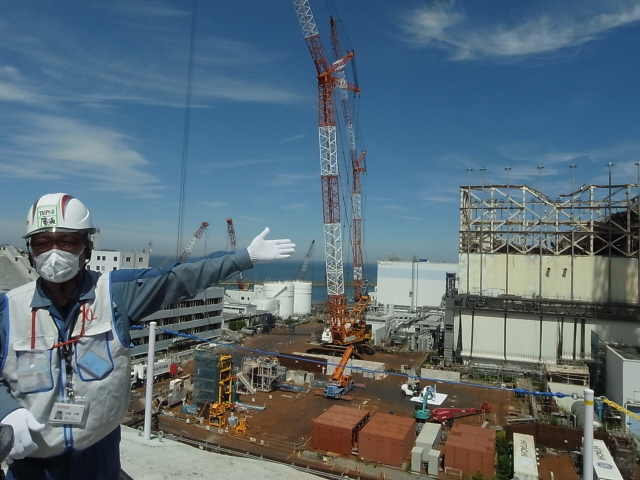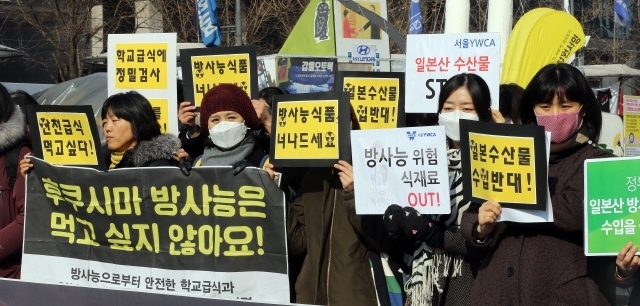 |
|
A TEPCO staff member explains the details of the 2011 accident at the Fukushima No. 1 nuclear power plant to reporters in June 2017.
|
80% of wastewater still contains radioactive materials exceeding threshold levels
Eighty percent of wastewater from the Fukushima Daiichi Nuclear Power Plant, which Japan previously claimed to have been fully cleansed of radioactive substances apart from tritium, has been found to still contain radioactive materials exceeding threshold levels. With the Japanese government currently pursuing plans to dilute the water and discharge it into the sea, the situation leaves Seoul hard-pressed to avoid taking action amid its fierce legal battle with Tokyo in the WTO over seafood imports from Fukushima and surrounding regions. The Tokyo Electric Power Company (TEPCO), following an examination of 890,000 tons of treated water (out of a total of 950,000 tons) that was contaminated by the accident on Mar. 11, 2011, at the Fukushima No. 1 nuclear power plant, said on Sept. 30 that more than 80 percent (that is, 750,000 tons) of the treated water contained radioactive elements exceeding the threshold for release into the environment. The Japanese government and TEPCO are currently attempting to persuade the media that the wastewater, currently stored in giant tanks near the plant, can be released into the ocean. However, according to reports published in Japanese newspapers such as the Asahi Shimbun, although seven years have passed since the nuclear disaster on Mar. 11, 2011, at Fukushima, the plant continues to produce about 170 tons of contaminated water daily. A hundred tons of this water can be attributed to the natural process by which the groundwater in the area leaked into the contaminated nuclear facility, and 70 tons of this water has been deliberately pumped into the facility to cool down the nuclear fuel from the first, second and third nuclear reactors. TEPCO has been treating about 100 tons of this water with its radioactive treatment system, called the multi-nuclide removal system (ALPS), and stored it in 900 enormous water tanks around the nuclear facility. The Japanese government has claimed ALPS was able to remove 62 types of radioactive elements from the water, except for tritium, a radioactive element with properties similar to hydrogen. Based on this claim, the government has conducted public hearings to explain its plan for diluting this tritium water with fresh water and expelling the mixture into the ocean. Based on data from Japan’s Ministry of Economy, Trade and Industry (METI), if the government opts to dump the wastewater into the ocean in such a way, it can dispose of all of its contaminated water in seven years and four months, with a minimum cost of 3.4 billion yen (around US$29,850,000). But during a METI public hearing in August earlier this year, it was discovered that in the treated wastewater, beyond just tritium, there were multiple other radioactive elements that exceeded threshold levels. In particular, it was found that some of the water tanks contained 600,000 becquerels of Strontium-90 per 1mL of water, 20,000 times more than then the acceptable levels. Strontium-90 has a long half-life, of 29 years, and when ingested by human beings, it can easily be deposited in the bones. Due to this new problematic development, TEPCO was able to discover that due to a malfunction of ALPS in 2013, the storage tanks had been contaminated with high-density wastewater, and that they had been too late in changing the adsorbents within ALPS, which filters out the radioactive materials.
 |
|
South Koreans rally at Seoul’s Gwanghwamun Plaza against the import of seafood products from the Fukushima area. (Hankyoreh archives)
|







